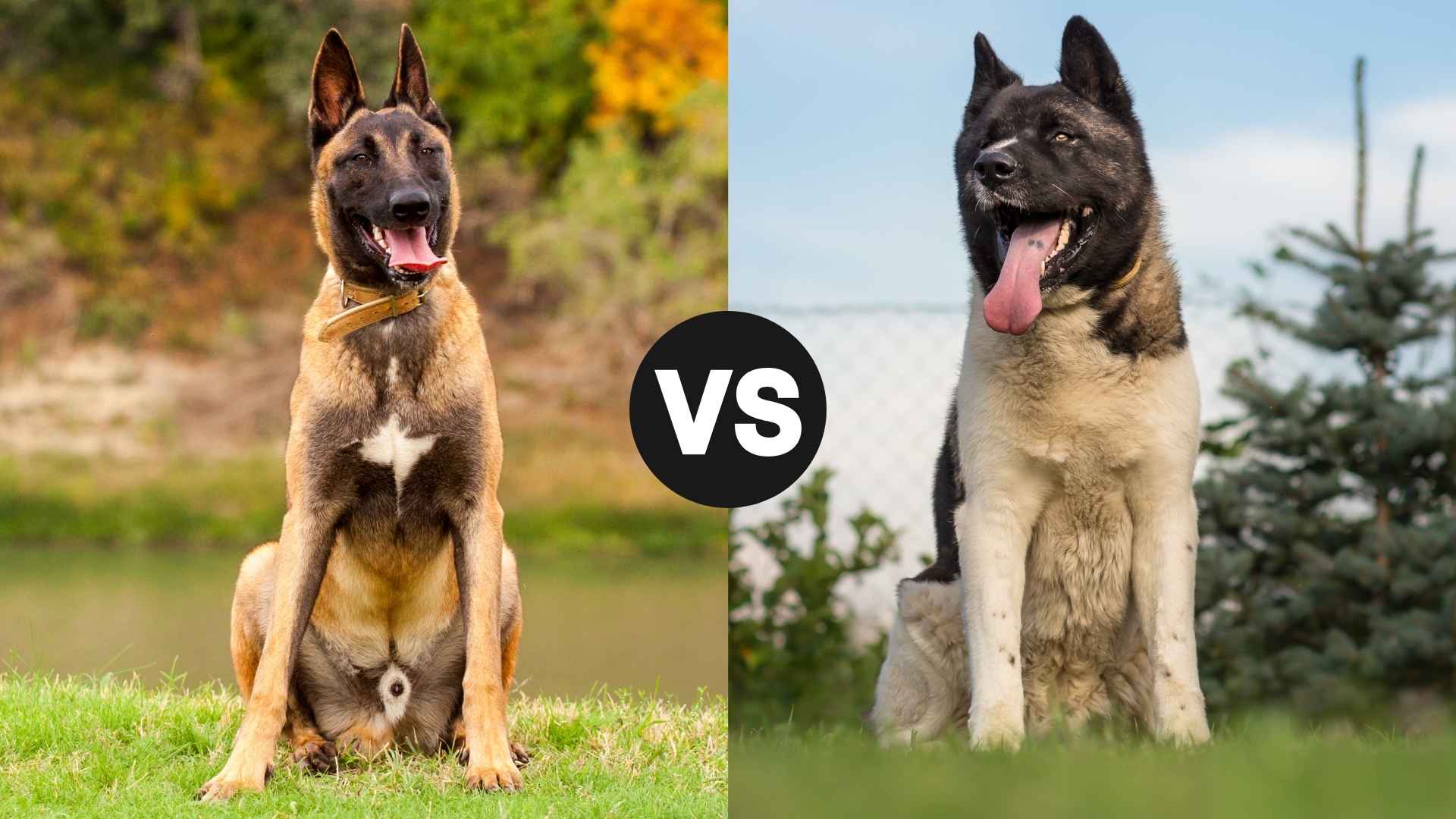The Belgian Malinois is one of the top breeds used by police forces around the world, while the Akita has been declared a national treasure in Japan.
These dogs carry reputations as bold, loyal, and powerful—but they’re different in ways that matter. The Malinois is a working machine, always alert, always ready. The Akita, on the other hand, is quiet, proud, and protective in a more reserved way.
Many people choose between these two without realizing how drastically their behavior and needs differ. They may both look strong and confident, but their personalities, care levels, and training demands are worlds apart.
If you’re deciding between these two remarkable dogs, it’s important to look deeper. This comparison will walk you through their size, temperament, trainability, grooming needs, and how they fit into real-life homes.
Belgian Malinois vs. Akita
Size and Weight Differences Between Belgian Malinois vs. Akita
Belgian Malinois usually measure between 22 to 26 inches tall, giving them a sleek and agile appearance. Akitas generally stand taller, often between 24 to 28 inches at the shoulder. Their strong necks and broad heads add to their impressive physical stance.
Weight Difference That Impacts Agility
Malinois typically weigh between 60 to 80 pounds with a naturally lean muscle build. Akitas, built for strength and endurance, usually range from 70 to 130 pounds. The added weight contributes to their slower pace but more grounded movement.
Frame and Bone Structure Details
Belgian Malinois are designed for speed and flexibility, with a finer skeletal frame. Akitas have a denser bone structure with thick legs and a deep chest that supports strong posturing. These traits are present even at the puppy stage and continue through maturity.
Functional Size and Utility
The compact frame of the Malinois supports extended movement in working environments and security services. Akitas, due to their size and bulk, are more suited to controlled settings with less physical intensity. This makes size a practical factor when choosing between the two breeds.
Comparing Trainability and Intelligence: Belgian Malinois vs. Akita
Belgian Malinois are consistently ranked among the smartest working breeds worldwide. They excel in task-based learning and pattern recognition under structured programs. This level of intelligence contributes to their success in roles that require split-second decision-making.
Training Response and Learning Curve
Malinois respond quickly to commands when training is frequent, clear, and consistent. They retain commands with fewer repetitions, making it easier to teach complex tasks. Their mental focus allows them to perform layered routines without losing precision.
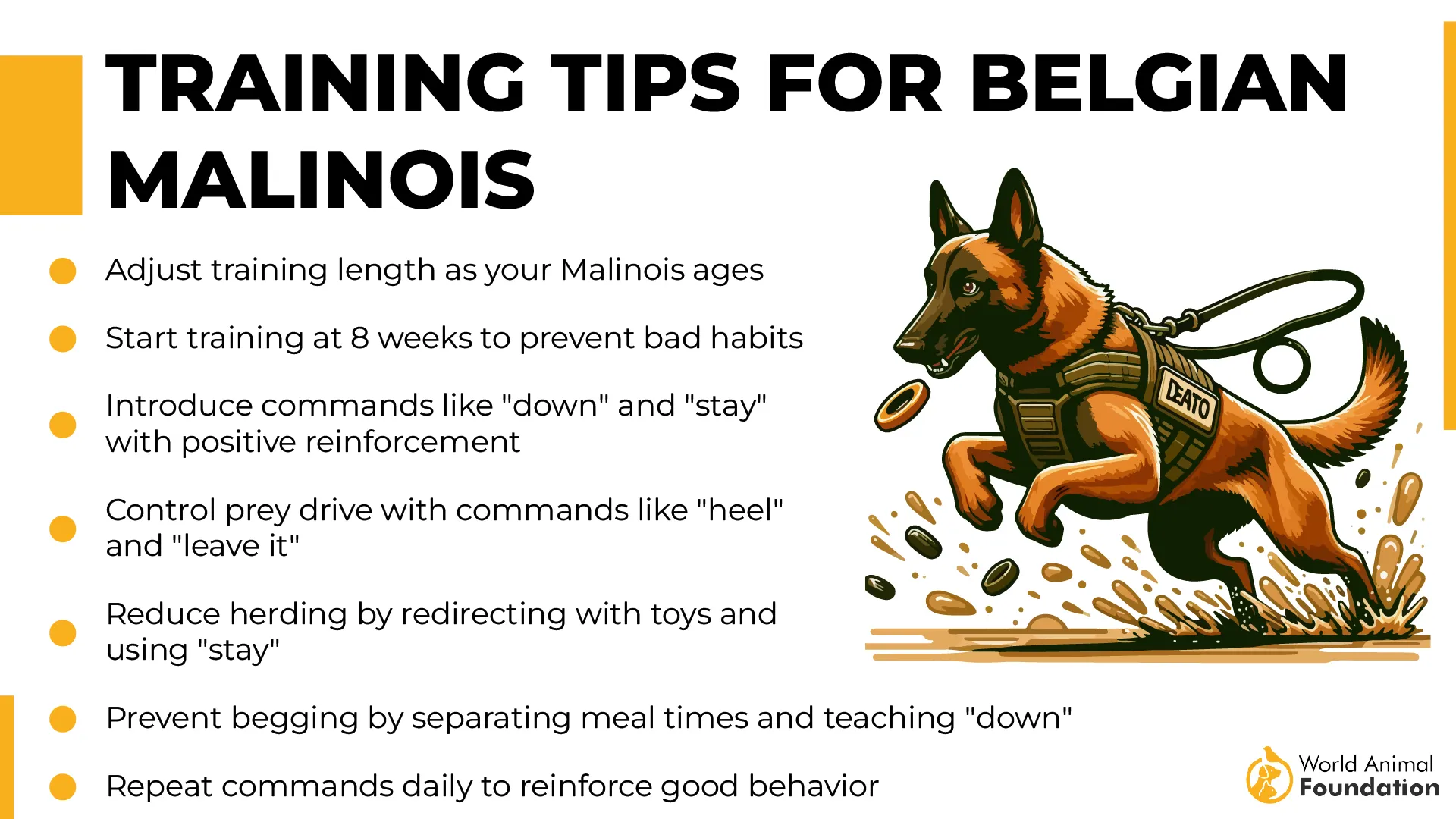
Independent Thinking in Akitas
Akitas display a strong-willed nature and often require early social conditioning to adjust to training environments. They can understand commands but may not act immediately unless they see a clear purpose. Owners need patience to properly teach and motivate them.
Time Investment and Behavioral Needs
Training either breed demands a willingness to spend time daily, especially early on. Akitas may require more effort in basic obedience due to their reserved style and territorial instincts to protect space and family. Belgian Malinois are more responsive in structured settings that reduce distractions.
Personality Traits and Temperament: Belgian Malinois vs. Akita
The Belgian Malinois was developed for demanding work and thrives on focus-driven tasks. They often lock into commands with intensity, which helps in fast-response roles. Their behavior can be misread as aggressive, though it’s typically controlled drive.
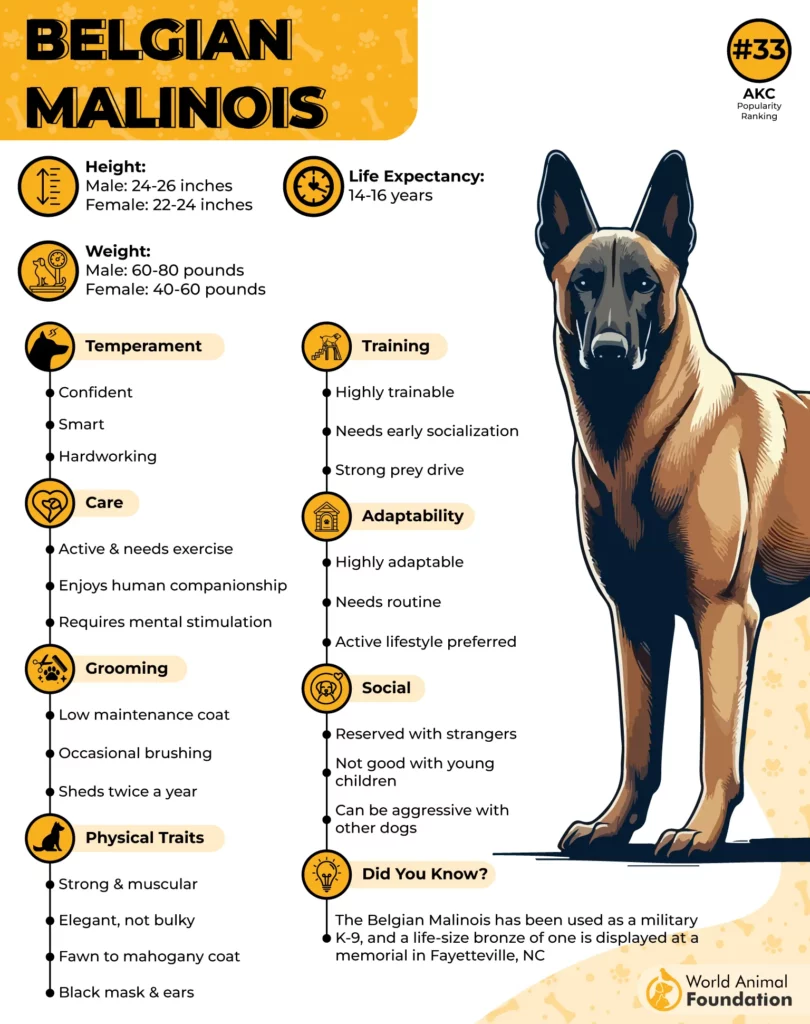
Natural Confidence in Akitas
Akitas display composed confidence and often evaluate situations before reacting. They tend to be silent observers but are quick to assert their presence if they sense disrespect. Early socialization plays a key role in balancing their strong-willed demeanor.
Response to Strangers and Other Animals
Malinois remain alert around unfamiliar people but respond well when directed by their handler. They generally coexist with other pets if properly introduced early. Mismanaged energy in this breed can create reactivity in high-distraction settings.
Protective Instincts in Akitas
Akitas tend to form deep bonds with family and take guarding responsibilities seriously. They’re often indifferent toward strangers and can be reactive toward other dogs, as per PetMD. Their calm presence can shift quickly if they sense an intrusion.
Adaptability and Independence Assessment: Belgian Malinois vs. Akita
The Belgian Malinois can adjust to urban or rural settings when their activity needs are met. Without structure, they may develop destructive habits out of frustration. They require a stable routine starting from a young age.
Akita’s Independence in Daily Life
Akitas do not seek constant validation and tend to entertain themselves without issue. This autonomy often leads to stubbornness during training. They are better suited for experienced owners who respect their independent streak.
Working Stability and Mental Needs
The Malinois does best when mentally stimulated with puzzles, scent games, or task-based learning. Their ability to remain engaged in changing environments is well-documented. Lack of outlets can result in intensity that’s difficult to redirect.
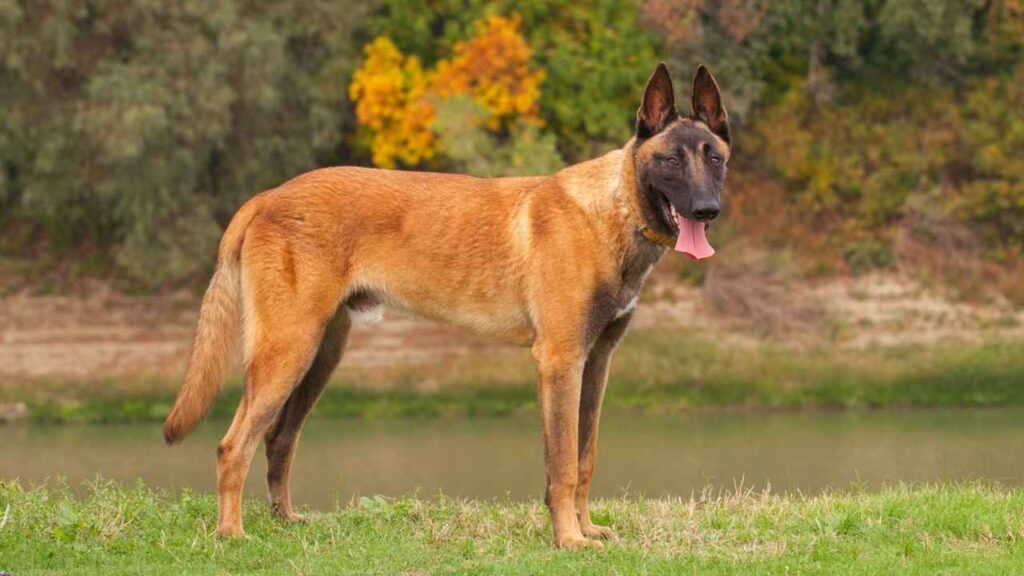
Akita’s Protective Decision-Making
Akitas assess threats calmly before acting, but they do not hesitate when they feel the need to attack. Their guarding response is instinctive and not based on excessive arousal. This makes them reliable but also requires close supervision of guests.
Bite Force and Characteristics: Belgian Malinois vs. Akita
The Akita has a documented bite force ranging between 350 to 400 PSI, placing it among the stronger canine breeds. Belgian Malinois, though physically agile, averages a bite force of around 195 to 250 PSI. This difference reflects their original purposes — guarding versus precision-driven tasks.
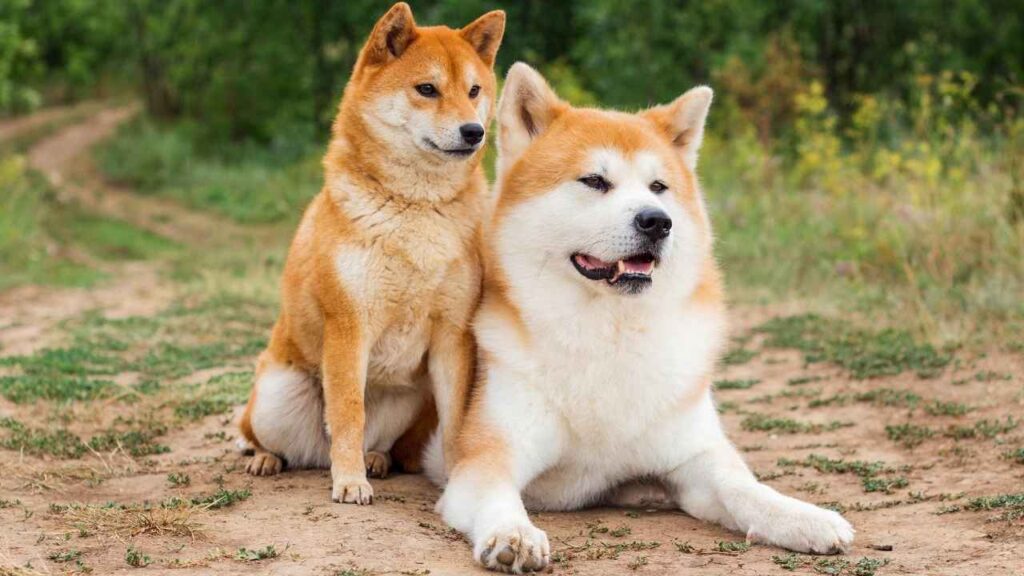
Jaw Structure and Grip Behavior
Akitas have broader jaws with dense musculature, enabling deep, anchoring bites when provoked. Their grip is typically firm and unmoving, influenced by their historical roles. Malinois exhibit more control, often using bite-release techniques taught during training.
Head Shape and Muzzle Mechanics
Akitas possess a large, block-like head that supports a strong bite radius. Malinois have a narrower skull and longer muzzle, giving them speed and maneuverability in their movements. These anatomical differences directly influence how each breed uses its bite.
Health Issues and Expected Lifespan Comparison
Belgian Malinois are generally resilient but can be prone to hip and elbow dysplasia, especially in working lines. Regular screenings help detect these early, especially during joint development stages. Some may also carry a genetic predisposition for progressive retinal atrophy.
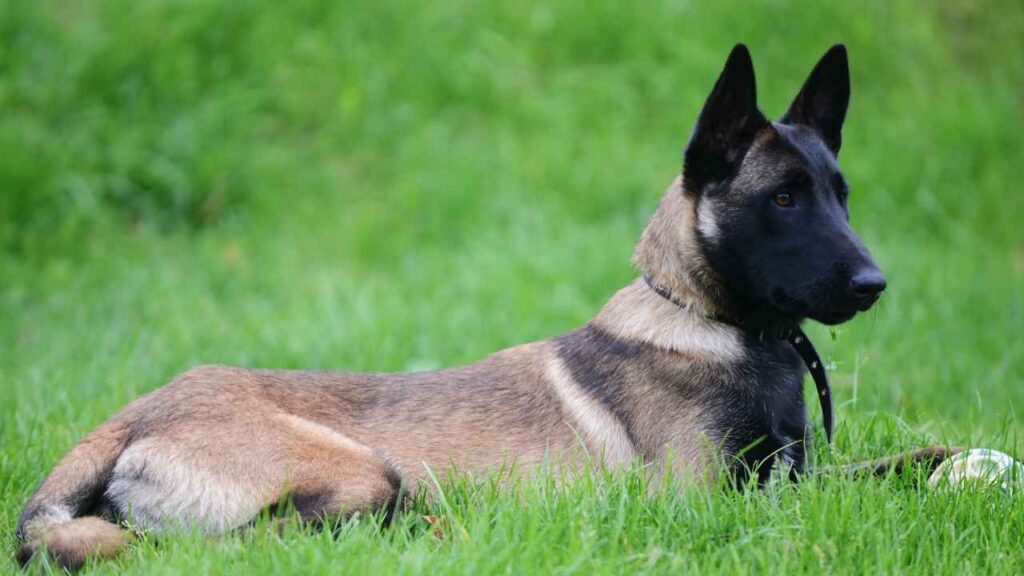
Health Patterns Seen in Akitas
Akitas tend to face autoimmune-related issues more frequently than many other breeds. Conditions like VKH (Vogt-Koyanagi-Harada-like syndrome) and sebaceous adenitis have been documented in the PDSA. Hypothyroidism and immune disorders may require lifetime management and testing.
Comparative Lifespan Range
The Belgian Malinois has an expected lifespan of 12 to 14 years when kept active and mentally engaged. Akitas typically live between 10 to 13 years, although some may reach 14 with consistent veterinary care. Lifespan can vary based on genetic lineage and early health monitoring.
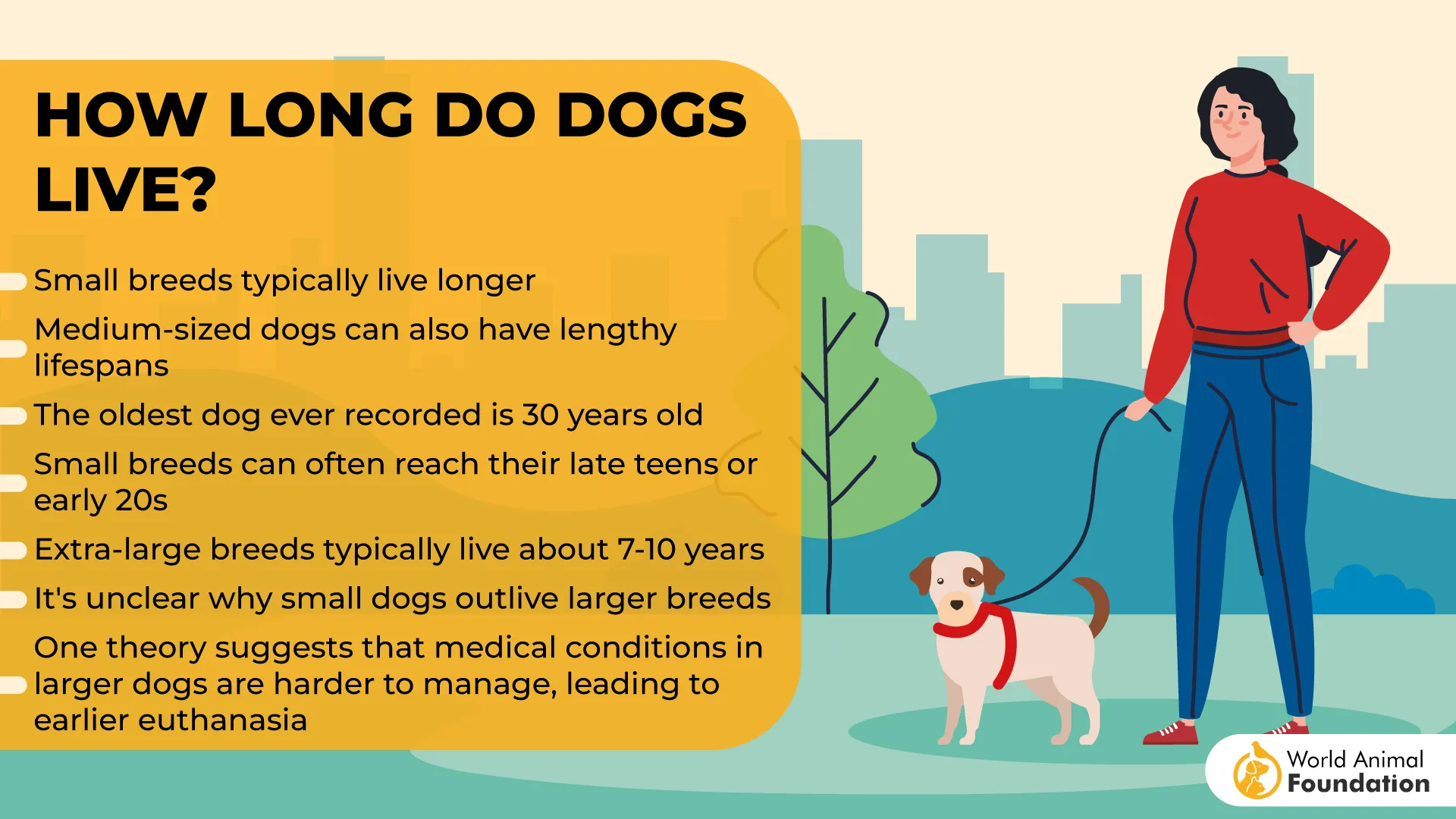
Preventive Health Care Needs
Belgian Malinois benefit from regular orthopedic evaluations and routine vision checks. For Akitas, dermatological care and thyroid testing are often part of long-term health planning. Both breeds should be monitored for breed-specific disorders from early adulthood.
Nutritional Needs and Weight Management for Belgian Malinois vs. Akita
Belgian Malinois, being high-energy working dogs, often require 2,000 – 3,000 calories per day, depending on activity, as per Citizen Shipper. Their metabolism works best with a protein-rich diet that includes moderate fat. Calorie adjustments are essential when training intensity increases or decreases.
Feeding Guidelines Based on Structure
Akitas require fewer feedings but denser meals, often totaling 3 to 4 cups of dry food, as claimed by the Pawlicy Advisor. Their slower metabolism suits a diet with balanced protein and joint-supporting nutrients. Overfeeding increases the risk of weight gain due to their naturally slower pace.
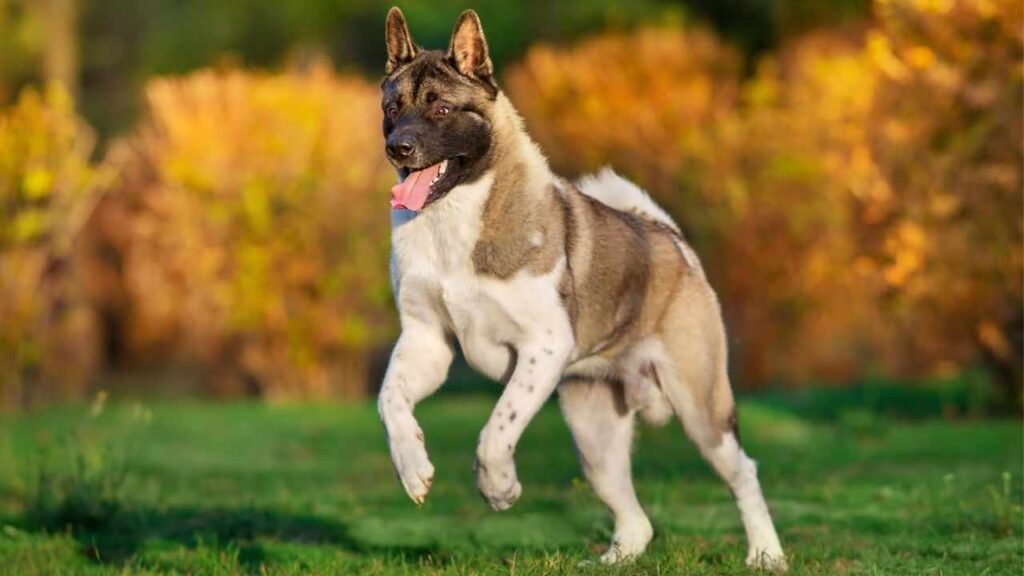
Macronutrient Focus and Meal Balance
Belgian Malinois benefit from higher protein ratios (25–30%) to maintain lean muscle. They often need food formulas that support joint health due to extended physical movement. Grain-inclusive diets are common when tailored to their energy expenditure.
Portion Control and Weight Monitoring
Akitas can be prone to obesity if portion sizes are not carefully managed, especially in indoor lifestyles. Scheduled feeding, rather than free-feeding, helps maintain weight stability. Slow feeding bowls are often recommended to prevent bloat and fast eating.
Grooming Requirements and Allergy Considerations
Belgian Malinois have a short double coat that sheds moderately year-round and heavily during spring and fall. Their topcoat lies flat and is harsh to the touch, offering weather resistance. Weekly brushing helps reduce dead hair buildup during peak shedding months.
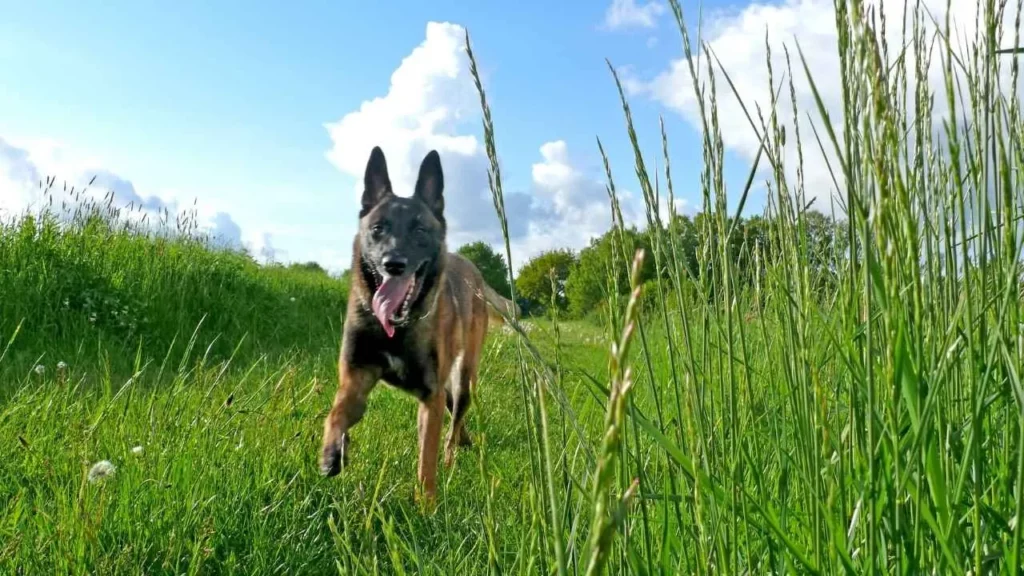
Grooming Time and Maintenance Level
Maintaining a Malinois typically requires minimal grooming time, around once a week with a firm bristle brush. They don’t require trimming or shaping of the coat. Regular checks for debris, especially after outdoor activity, help prevent minor skin irritations.
Akita Coat Volume and Grooming Effort
Akitas carry a dense, plush double coat that demands a more involved grooming routine. Heavy shedding happens twice a year, and during these periods, daily brushing becomes necessary. Their thick undercoat tends to trap loose fur and dirt more easily.
Sensitivity to Allergens and Dander
Neither breed is hypoallergenic, and both produce dander that can trigger reactions in sensitive individuals. Akitas tend to generate more dander due to their dense fur structure. Homes with allergy concerns may find routine vacuuming and air purifiers beneficial.

Conclusion
The Belgian Malinois and Akita are not just strong dogs—they’re strong personalities. The Malinois fits owners who value responsiveness and need a partner for daily activity. The Akita leans toward independence, quiet loyalty, and deep emotional ties formed over time.
Each dog type thrives in the right rhythm. If your schedule is full of structure and long walks, the Malinois can match you beat for beat. If you prefer a more grounded companion who watches rather than reacts, the Akita holds that space well.
Both breeds are protective and intelligent, but their needs run parallel, not alike. Whether you’re a first-timer or already looking for an older dog with experience, matching pace and presence matter most.
At the end of the day, it’s not just about what kind of dog you want—it’s about what kind of time you’re ready to give.


